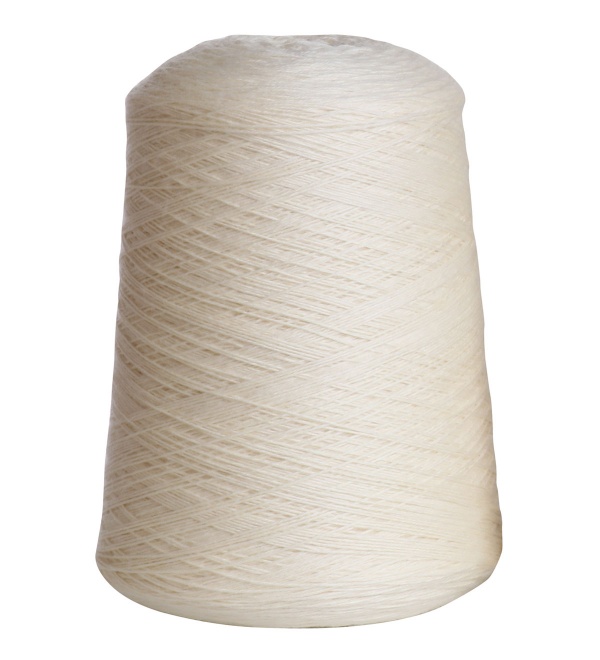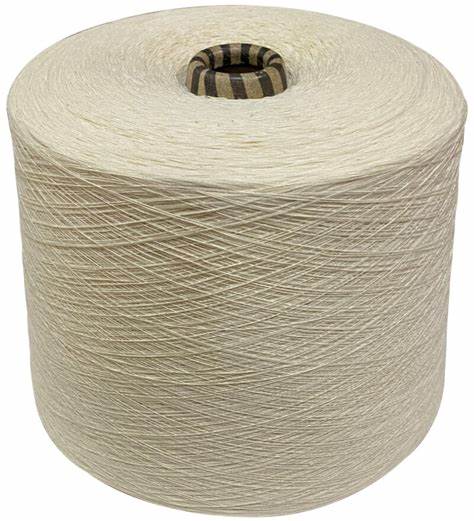Spinning fibers into yarn involves two primary methods: ring spinning and open-end (OE) spinning. Each method has its own set of processes and applications, and they yield yarns with different characteristics. Here’s a detailed overview of the production of ring-spun and OE-spun yarns using polyester staple fiber (PSF):
1. Ring Spinning
Process Overview
Opening and Blending:
- Opening: Fiber bales are opened and loosened.
- Blending: Fibers from different bales are blended to ensure uniformity and consistency.
Carding:
- The blended fibers are fed into a carding machine, which disentangles, cleans, and intermixes the fibers to produce a continuous web or sliver.
Drawing:
- The carded sliver is drawn through a series of rollers to align the fibers and reduce the sliver to a more consistent thickness. This process may involve multiple stages of drawing to achieve the desired fiber alignment and uniformity.
Roving:
- The drawn sliver is further attenuated and given a slight twist to form a roving. This intermediate stage prepares the fibers for final spinning.
Ring Spinning:
- The roving is fed into a ring-spinning frame, where it is further drawn out and twisted to form the final yarn. The ring spinning process imparts a higher degree of twist compared to OE spinning, resulting in stronger and finer yarns.
Winding:
- The spun yarn is wound onto bobbins or cones, ready for subsequent processes such as plying, dyeing, or weaving.
Characteristics of Ring-Spun Yarn
- Strength: Higher tensile strength due to the higher twist level.
- Uniformity: Smoother and more uniform appearance.
- Softness: Softer hand feel, making it suitable for high-quality textiles.
- Versatility: Can be spun into finer counts and used for a wide range of fabrics.
Applications
- Apparel: High-quality garments, knitwear, and fabrics requiring superior softness and strength.
- Home Textiles: Bed linens, towels, and other household fabrics.
- Technical Textiles: Applications requiring high strength and uniformity.
2. Open-End (OE) Spinning
Process Overview
Opening and Blending:
- Similar to ring spinning, fiber bales are opened and blended to ensure consistency.
Carding:
- The blended fibers are carded to produce a web or sliver, which is then fed into the OE spinning machine.
OE Spinning:
- In OE spinning, the carded sliver is fed into a rotor spinning machine. The fibers are separated and reassembled into yarn by centrifugal force within the rotor.
- The fibers are twisted together as they are drawn out of the rotor, forming the yarn. This process is faster and less labor-intensive compared to ring spinning.
Winding:
- The spun yarn is wound onto packages or cones for further processing.
Characteristics of OE-Spun Yarn
- Production Speed: Faster and more efficient than ring spinning.
- Cost-Effectiveness: Lower production costs due to the higher speed and lower labor requirements.
- Texture: Typically coarser and less uniform compared to ring-spun yarns.
- Strength: Generally lower tensile strength due to the lower twist level.
Applications
- Denim: Widely used in denim fabrics due to its coarser texture and durability.
- Towels: Suitable for towels and similar products where absorbency and bulk are important.
- Industrial Textiles: Applications where cost and production speed are prioritized over fineness and uniformity.
Comparison Between Ring-Spun and OE-Spun Yarns
| Feature | Ring-Spun Yarn | OE-Spun Yarn |
|---|---|---|
| Strength | Higher | Lower |
| Uniformity | More uniform | Less uniform |
| Softness | Softer | Coarser |
| Production Speed | Slower | Faster |
| Cost | Higher production cost | Lower production cost |
| Applications | High-quality textiles, apparel, and home textiles | Denim, towels, and industrial textiles |
DIFFERENCE BETWEEN OPEN-END YARN AND RING YARN
Both ring-spun and OE-spun yarns have their unique advantages and applications. Ring-spun yarns are preferred for high-quality textiles that require strength, uniformity, and softness. On the other hand, OE-spun yarns are favored for applications where cost efficiency and production speed are critical. Understanding the characteristics and suitable applications of each type of yarn helps manufacturers choose the appropriate spinning method for their specific needs.
1- Open-End spinning systems exhibit a higher production speed compared to Ring spinning systems, resulting in increased production output and cost reduction.
2- The process steps involved in Open-End spinning are notably shorter than those in Ring spinning, contributing to cost efficiency.
3- Yarn produced through the Open-End system possesses characteristics such as bulkiness, elasticity, absorbency, and reduced hairiness in comparison to Ring yarn. When twist levels are moderate, the yarn also exhibits good behavior, with high absorbency for sizing and enhanced color brightness.
4- The properties of Open-End spun yarn are less variable than those of ring yarn, showing minimal fluctuations in thinness, unevenness, and durability along the length of the yarn.
5- Open-End yarns typically consist of an average of 70-100 fibers within the cross-section, limiting their production in finer counts compared to ring yarns which require an average of 50-70 fibers. This results in practical limitations to achieving fine counts in Open-End spinning, with Ne30 being a common upper limit.
6- A technological drawback of Open-End spinning is the formation of spiral fibers on the yarn surface. These fibers, created as the yarn enters the rotor cavity, hinder the twisting process and lead to a curled appearance. This distinguishes Open-End yarns from Ring yarns, where the twist can be easily unraveled to expose individual fibers on the surface.






